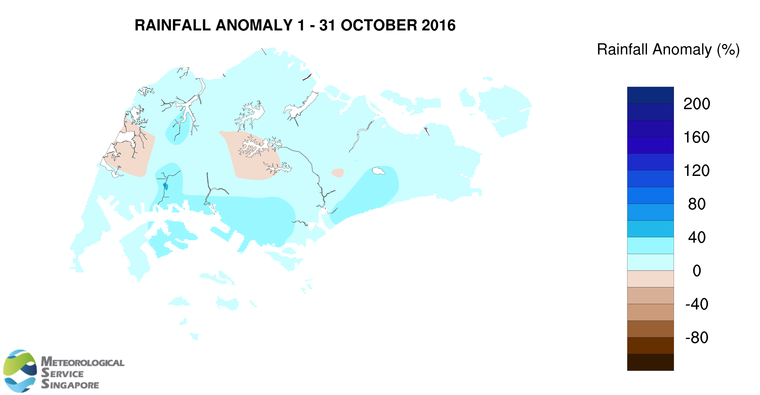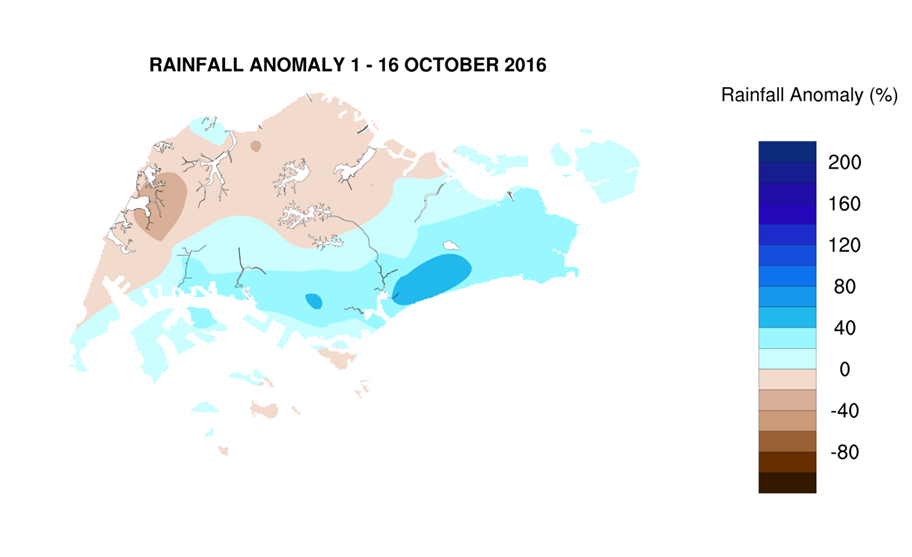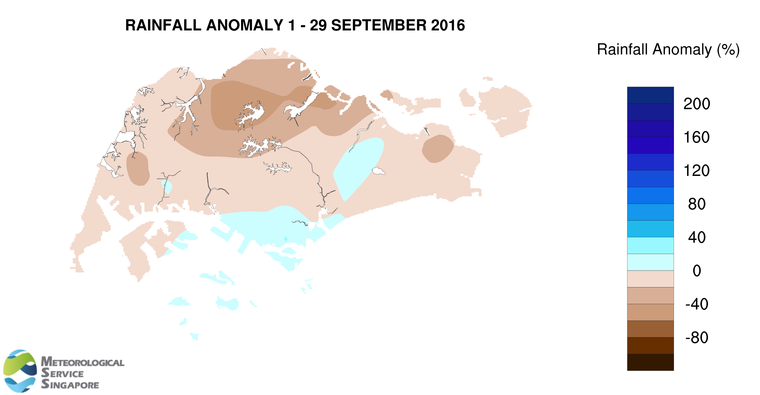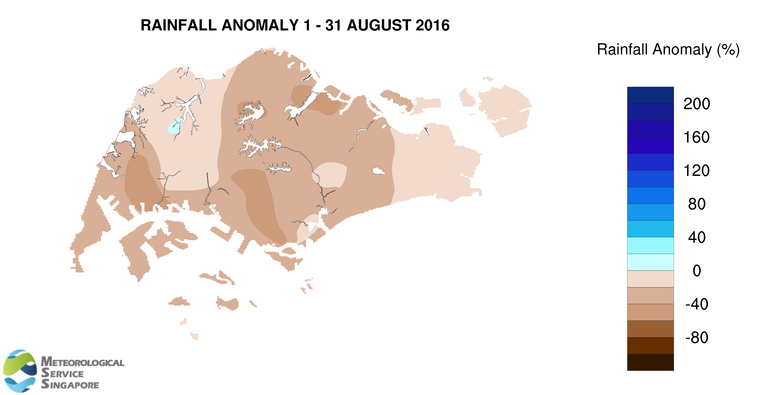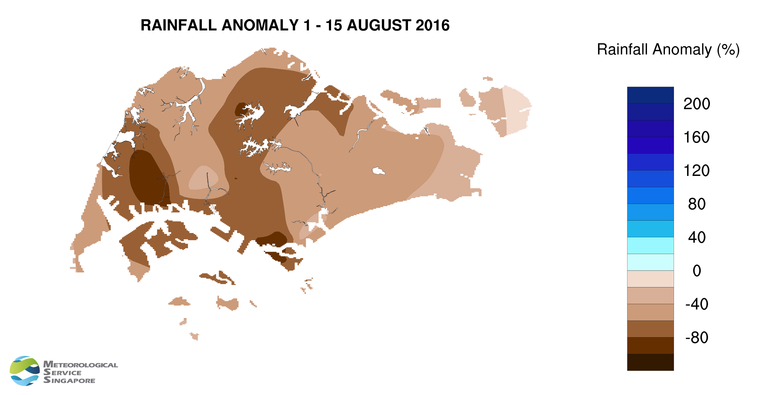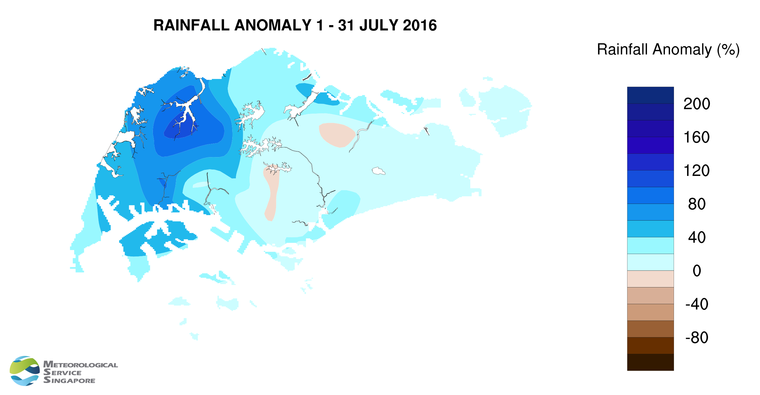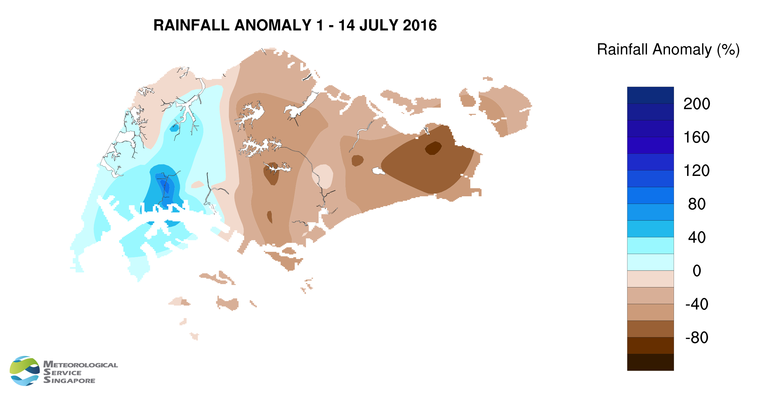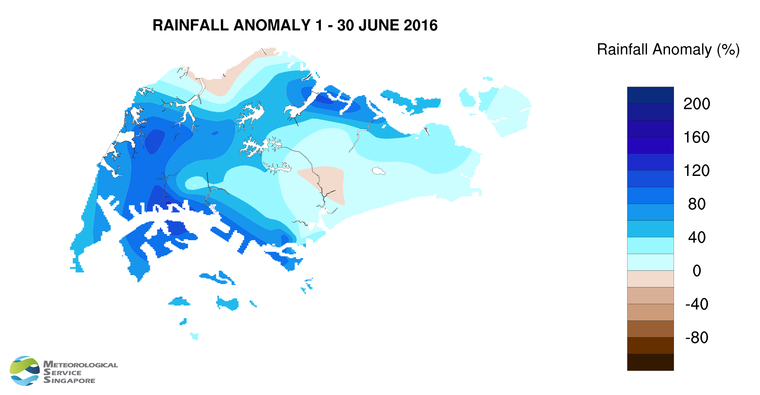Expect more thundery showers in the next fortnight
Singapore, 1 November 2016 – Singapore and the surrounding region are currently experiencing Inter-monsoon conditions which are expected to prevail during the first fortnight of November 2016. The Inter-monsoon period is characterised by an increase in the occurrence of showers, heavy at times, over Singapore, and winds that are mostly light and variable in direction.
2 For the first half of November 2016, short-duration thundery showers are expected on five or six days, mostly in the afternoon and could extend into the evening. In addition, widespread thundery showers accompanied by gusty winds are expected on three or four days between the predawn and early morning. November is climatologically the second wettest month of the year after December. In the first fortnight of November 2016, rainfall is expected to be slightly above normal.
3 In the coming fortnight, the maximum daily temperature on most days is forecast to be around 32°C or 33°C, and on a few days could reach a high of around 34°C.
4 For updates of the daily weather and haze forecast, please visit our MSS website (https://www.weather.gov.sg), NEA website (www.nea.gov.sg), the haze microsite (www.haze.gov.sg) or download the myENV app, MSS’ Weather@SG app.
Review: 1 – 31 October 2016
5 Southwest Monsoon conditions prevailed in the region for most parts of October 2016, before transitioning to Inter-monsoon conditions in the last week of the month. In October 2016, the low level winds were mostly blowing from the southwest or west.
6 Compared with the first half of October 2016, Singapore experienced fewer warm days in the second half of the month due to more frequent rain showers in the region. The daily maximum temperature for October 2016 ranged between 29.3°C and 34.6°C. At the Changi climate station, the mean monthly temperature recorded for October 2016 was 28.4°C, which is 0.8°C warmer than the long-term mean for October.
7 In October 2016, thundery showers occurred mostly in the late morning and afternoon due to strong solar heating of land areas coupled with the convergence of winds over Singapore and the surrounding vicinity. On several days during the period, the occurrence of Sumatra squalls brought moderate to heavy thundery showers to many parts of Singapore in the pre-dawn hours and early morning. The heaviest daily rainfall of 96.8mm was recorded on 3 October 2016 around Buona Vista.
8 Most parts of Singapore received above normal rainfall in October 2016. The highest rainfall of 328mm (46% above average) was recorded around Boon Lay area. Rainfall was lowest around Upper Thomson where 188.8mm (11% below average) was recorded.
CLIMATE STATION STATISTICS FOR NOVEMBER (Climatological reference period: 1981 – 2010)
| Mean daily maximum temperature | 31.1 °C |
| Mean daily minimum temperature | 24.3 °C |
| Mean monthly temperature | 27.0 °C |
| Mean rainfall for the month | 258.5 mm |
| Mean number of rain days | 18 |
| Highest monthly mean daily maximum temperature | 32.0 °C (1997) |
| Lowest monthlymean daily minimum temperature | 23.6 °C (1981,1983,1991) |
| Highest monthly rainfall | 508.4 mm (1989) |
| Lowest monthly rainfall | 53.5 mm (1981) |
